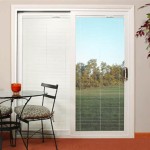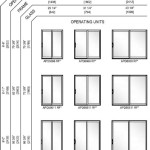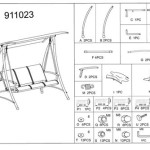How To Keep Your Patio Umbrella From Spinning
A spinning patio umbrella can be a frustrating and even dangerous situation. The constant rotation can be distracting, prevent adequate shade, and in strong winds, pose a risk of the umbrella becoming dislodged and causing damage or injury. Understanding the causes of a spinning patio umbrella and implementing effective solutions are key to enjoying a stable and relaxing outdoor space. Several factors can contribute to this problem, ranging from inadequate base weight and design flaws to wind conditions and improper installation. This article will explore these factors and provide a comprehensive guide to preventing your patio umbrella from spinning.
Understanding the Factors That Cause Spinning
Before implementing solutions, it is important to understand why a patio umbrella spins. Several factors can contribute to this issue, and addressing them appropriately is crucial for effective stabilization. Wind, of course, is the primary driver, but other elements related to the umbrella's design, installation, and supporting base also play a significant role.
A primary factor is inadequate base weight. Patio umbrella bases are designed to provide a counterweight against the force of the wind. If the base is too light for the size of the umbrella and the typical wind conditions in your area, the umbrella will be more prone to spinning and even tipping over. The larger the umbrella canopy, the heavier the base needs to be. Manufacturers typically provide recommendations for minimum base weights based on umbrella size and wind resistance. These recommendations should be carefully considered and potentially exceeded, especially in windy locations.
The design of the umbrella itself can also contribute to spinning. Umbrellas with a vented canopy are often more stable in windy conditions than those with a solid canopy. Vents allow wind to pass through the umbrella, reducing the overall force exerted on the structure. Without vents, the entire surface area of the canopy acts as a sail, catching the wind and increasing the likelihood of spinning and tipping. The shape of the canopy can also impact stability; a more aerodynamic design can reduce wind resistance and minimize spinning.
Improper installation or assembly can lead to instability. If the umbrella pole is not securely fastened to the base, it can wobble and spin even in light winds. Check the manufacturer's instructions carefully and ensure that all screws, bolts, and locking mechanisms are properly tightened. Loose connections can amplify the effects of wind and contribute to unwanted movement. Some umbrellas utilize set screws or clamping mechanisms to secure the pole; these should be inspected regularly and tightened as needed.
The environment surrounding the umbrella can also play a role. Open areas with unobstructed wind flow will experience higher wind speeds than sheltered locations. If your patio is exposed to strong winds, you will need to take extra precautions to secure the umbrella. Consider the positioning of the umbrella relative to buildings, fences, or trees that can act as windbreaks. Even slight reductions in wind exposure can significantly improve umbrella stability.
Finally, the material quality of the umbrella can affect its susceptibility to spinning. Inferior materials may flex or bend excessively in the wind, contributing to instability. Look for umbrellas made from durable, weather-resistant materials, such as aluminum or steel for the pole and canopy fabric that is resistant to tearing and fading. High-quality components will not only last longer but also provide better stability in windy conditions.
Methods for Preventing Rotation
Once the factors contributing to the spinning are understood, several practical solutions can be implemented to prevent this unwanted movement. These solutions range from simple adjustments to more involved modifications, depending on the severity of the problem and the characteristics of the umbrella and its surroundings.
Ensuring adequate base weight is the most fundamental step. As a general rule, a larger umbrella requires a heavier base. Consider the umbrella’s canopy size and the typical wind conditions in your area when selecting a base. For umbrellas between 7 and 9 feet in diameter, a base weighing at least 50 pounds is generally recommended. For larger umbrellas, such as those exceeding 10 feet, a base weighing 70 pounds or more may be necessary. In particularly windy locations, even heavier bases may be required. You can augment the weight of an existing base by adding sandbags or concrete weights around it. Many retailers also sell weighted collars designed specifically for adding weight to umbrella bases.
Securing the umbrella pole within the base is equally important. Check that the pole fits snugly into the base receiver. If there is excessive play or wobble, use shims to fill the gap. Shims can be made from various materials, such as wood, rubber, or plastic. The goal is to create a tight fit that prevents the pole from rotating independently of the base. Some bases have adjustable clamping mechanisms that can be tightened to grip the pole more securely. Make sure these mechanisms are properly engaged and adjusted as needed.
Consider implementing a tethering system. This involves using ropes or straps to secure the umbrella to nearby structures, such as patio furniture, posts, or walls. The tethers should be attached to the umbrella frame at multiple points to distribute the force evenly. Use strong, weather-resistant rope or straps that can withstand the rigors of outdoor use. Ensure that the tethering points are secure and stable to prevent the umbrella from pulling them loose in strong winds. A well-designed tethering system can significantly reduce the likelihood of spinning and tipping.
Modifying the umbrella itself can also improve stability. If your umbrella has a solid canopy, consider replacing it with a vented canopy. Vents allow wind to pass through, reducing the overall force on the umbrella. If replacing the canopy is not feasible, you may be able to modify the existing canopy by adding vents. This can be done by cutting small slits in the fabric and reinforcing the edges to prevent tearing. However, proceed with caution, as improper modifications can damage the canopy and reduce its lifespan. Always check the manufacturer’s recommendations before making any modifications.
Strategic placement of the umbrella can also mitigate spinning. Position the umbrella in a location that is sheltered from direct wind exposure. This could involve placing it near a building, fence, or large trees that can act as windbreaks. However, be mindful of the potential for falling branches or debris from trees. You can also use other patio furniture, such as tables and chairs, to create a more sheltered environment around the umbrella. Even slight reductions in wind exposure can significantly improve umbrella stability.
Consider using ground anchors for added stability. This is especially useful for umbrellas that are frequently used in the same location. Ground anchors are metal stakes that are driven into the ground and attached to the umbrella base using straps or chains. This provides a secure connection between the umbrella and the ground, preventing it from tipping or spinning. Ground anchors are particularly effective in windy areas or on uneven surfaces. Ensure that the soil is suitable for anchoring and that the anchors are properly installed according to the manufacturer’s instructions.
Maintenance and Inspection
Even with the best preventative measures in place, regular maintenance and inspection are crucial for ensuring the long-term stability of your patio umbrella. Over time, wear and tear, corrosion, and loose connections can compromise the umbrella's ability to withstand wind and prevent spinning. A proactive approach to maintenance can identify and address potential problems before they escalate.
Regularly inspect the umbrella base for cracks, rust, or other signs of damage. A damaged base can significantly reduce its ability to provide adequate support. Check the weight of the base and ensure that it is still sufficient for the size of the umbrella and the typical wind conditions in your area. If the base is filled with sand or water, check for leaks and refill as needed. Consider reinforcing the base with additional weights if necessary.
Examine the umbrella pole and frame for any signs of bending, cracking, or corrosion. These issues can weaken the structure and make it more susceptible to spinning and tipping. Pay particular attention to the joints and connections, as these are often the weakest points. Tighten any loose screws, bolts, or other fasteners. If you notice any significant damage, consider repairing or replacing the affected components.
Inspect the canopy for tears, rips, or fading. A damaged canopy can catch the wind more easily, increasing the likelihood of spinning. Repair any small tears or rips promptly to prevent them from spreading. Consider replacing the canopy if it is severely damaged or faded. When replacing the canopy, choose a material that is durable, weather-resistant, and UV-resistant.
Periodically clean the umbrella to remove dirt, dust, and debris. A clean umbrella will look better and perform better. Use a mild soap and water solution to clean the canopy and frame. Avoid using harsh chemicals or abrasive cleaners, as these can damage the materials. Allow the umbrella to dry completely before storing it. Regular cleaning can also help to identify potential problems early on.
When not in use, especially during periods of heavy wind or inclement weather, it is best to close and secure the umbrella. Closing the umbrella reduces its surface area and minimizes the force exerted by the wind. Secure the umbrella with a tie or strap to prevent it from opening unexpectedly. If possible, store the umbrella indoors during the off-season to protect it from the elements. This will help to prolong its lifespan and maintain its stability.
By consistently monitoring the condition of your patio umbrella and addressing any issues promptly, you can ensure that it remains stable, safe, and enjoyable for years to come. Neglecting maintenance can lead to premature failure and potentially dangerous situations.

6 Tips For How To Keep Cantilever Umbrella From Spinning

How To Stop A Spinning Patio Umbrella

Keep Patio Umbrella Steady Tips To Prevent Spinning In The Wind

6 Tips For How To Keep Cantilever Umbrella From Spinning

15 Clever Ways To Stop Your Parasol Spinning In The Wind

How To Stop A Spinning Patio Umbrella Youtube

15 Clever Ways To Stop Your Parasol Spinning In The Wind

How To Stop Your Umbrella From Blowing Away An Engineers Guide Stay Cool

6 Tips For How To Keep Cantilever Umbrella From Spinning

Keep Patio Umbrella Steady Tips To Prevent Spinning In The Wind








